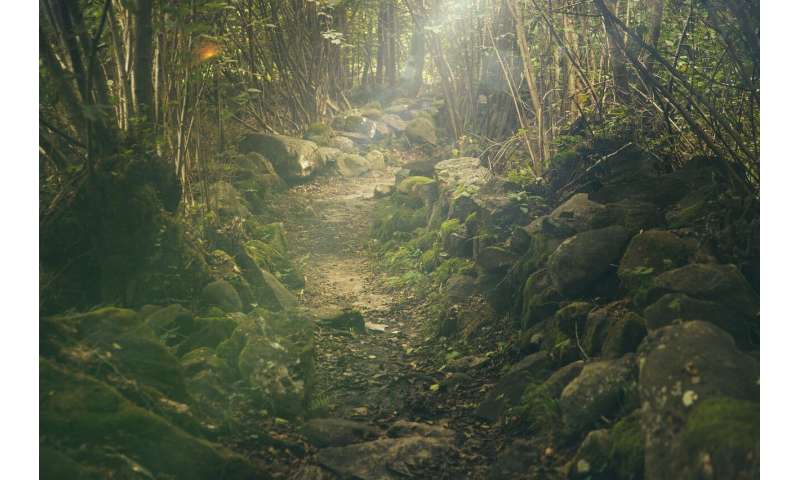Climate scientists create model for global forest growth through 2060
by Mike Nolan
When it comes to the fight against global warming, our forests offer a valuable service. Trees act as carbon sinks, capturing CO2—the main greenhouse gas heating up the Earth's climate—from the air and storing it until they die.
But as man-made and natural causes of deforestation intensify, it is unknown how long or to what extent this important environmental service will continue.
Modeling Forests' Future
In a new study, researchers at the University at Albany have turned to more than a century's worth of data (from 1901 to 2012) in NOAA's International Tree Ring Data Bank to both analyze historical tree growth at 3,579 forests around the world and create a model for future projections (from 2045 to 2060).
Their findings show that some of the largest tropical rainforests, such as the Amazon and Congo Basin, may soon undergo enhanced climatic stress due to global warming trends, resulting in reduced tree growth and their potential to act as carbon sinks. Temperate forests (which rely on high levels of precipitation and humidity) may instead benefit from a warmer and more humid planet.
Results were recently published in Global Ecology and Biogeography.
"One way of studying forest dynamics and its impacts is by analyzing tree-ring variations across time and space," said Ernesto Tejedor, the study's lead author and a postdoctoral research associate in the University's Department of Atmospheric and Environmental Sciences (DAES). "To do this, we assessed climate's historical impacts, such as changes in precipitation and temperature, on forest tree-ring growth through a concept known as 'synchrony' which relies on the assumption that the world around us is a spatially, auto-correlated system."
"We believe this approach holds strong potential for diagnosing the future climate effects on trees. Through our model, we were able to detect regional hot spots, highlighting tree populations or locations that are particularly sensitive to climate change, and might require special attention for conservation and management efforts," he added.
Tree-Rings and Climate History
DAES professor Mathias Vuille, a co-author of the study, and mentor to Tejedor, has often turned to historical tree-ring data to gain insight on past climate variations in both North and South America. Every year, trees form new growth rings (also called tree rings). Not only do these rings tell us the age of a tree, but also the climatic conditions during its lifetime.
Vuille was awarded a $5 million National Science Foundation (NSF) PIRE grant in 2017 to better understand how and why Earth's climate has varied naturally over the past thousand years. His team (which includes Tejedor) are using tree-ring and cave sediment archives to produce reconstructions of historical extreme weather events, analyze societal responses and better predict future events based on past model-archive comparisons.
Their project is in the midst of running for five years through August 2022.
"These kinds of global studies wouldn't be possible without collaborative science—including access to NOAA's tree-ring database and funding through the NSF," Vuille said. "We are now turning our efforts to develop a new tree-ring network of South American (tropical and alpine) sites by performing intensive field campaigns in Peru, Bolivia, Brazil and Argentina. This new network will provide invaluable information, not only on the ecological impacts of climate change in these forests, but also the greater significance of this current climatic period."
More information: Ernesto Tejedor et al. A global perspective on the climate-driven growth synchrony of neighbouring trees, Global Ecology and Biogeography (2020). DOI: 10.1111/geb.13090
Journal information: Global Ecology and Biogeography
Provided by University at Albany